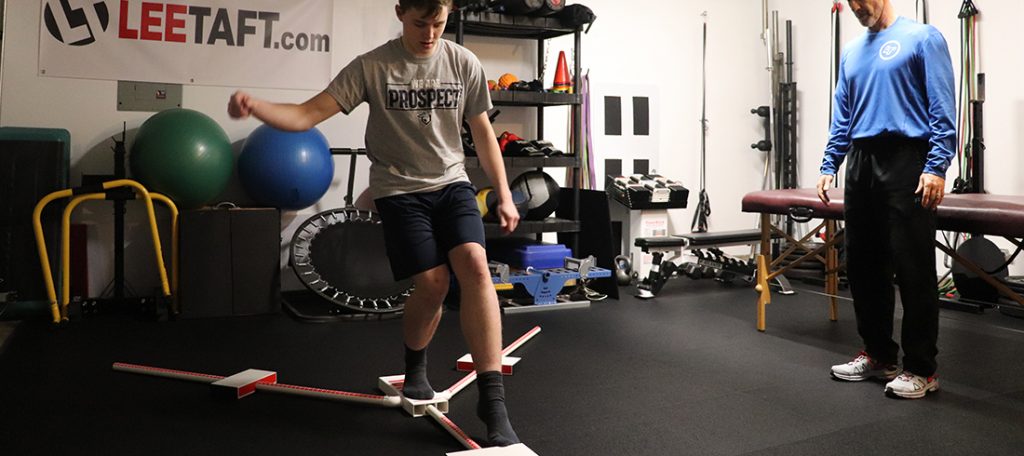Five Tips to a Successful Athletic Assessment and Evaluation
There is no doubt that completing various forms of assessment will enlighten you and your athletes to what needs to be addressed. I have listed five key tips to improving your assessment process.
Tip #1 Functional Movement Screen
If you are not familiar with the Functional Movement Screen (FMS), then you need to make it a point to become more familiar. It is a valuable tool for discovering movement limitations in your athletes with easy-to-perform exercises.
The FMS can be modified for larger groups or for different populations. The most valuable information we gain from the FMS is the identification of faulty motor programming that leads to faulty basic movement patterns. For example, some athletes cannot perform a basic squat without altering the body to finish the squat. Most of the time, it is a matter of reprogramming the athlete’s neuromuscular system so their squat pattern becomes efficient again. This is important because athletes need to be able to get into the squat position often when performing speed and agility, not to mention strength training.
Do yourself a favor and learn the FMS.
Tip #2 Ankle Mobility
Each athlete is asked to perform a simple ankle mobility exercise to measure their ability to dorsiflexion (ability to load the ankle properly). With limited ankle dorsiflexion, the athlete will not be able to maintain proper foot and ankle position when attempting to load.
The other issue we see with the lack of ankle mobility is a compensation of the body to over come this limitation. We see athletes who lean forward at the waist too much, collapse inward at the knees, and have flat feet.
The exercise the athlete performs is simply keeping the heel flat on the ground and the knee glided forward over the outside two toes (I don’t want the knee going inside the big toe). If the athlete can’t execute at least 1 to 2 inches beyond the knee, we will then work with them daily to improve the range.
Tip #3 Perform Basic Flexibility
Performing basic flexibility should be a no brainer. We make sure the athlete has adequate flexibility in the major muscles and joint range of motion. For example, I will look at hamstring flexibility, quadriceps, hips/glutes, and shoulder to name several. If the athlete lacks basic flexibility, which in turn changes posture, this is a very important issue that needs to be addressed.
I have seen athletes that can’t perform basic running exercises because they lack the flexibility in the hip flexors. This must be addressed.
We look at basic flexibility exercises at the initial meeting, as well as other potential issue as we see limitations.
Tip #4 Athletic Assessments
I am a big fan of assessing an athlete each and every day, especially while they are moving. I have simple exercises I always want to see an athlete perform. These exercises are the following: lateral shuffle and change of direction, crossover runs and change of direction, linear acceleration and deceleration, retreating skills, and finally, landing techniques from various jumps. I use many different exercises during an athletic assessment and what I am mainly looking for is body control and the ability to make efficient movements from all directions.
When assessing athletes, I always consider the sport the athlete plays, but I still want to see all athletes move in all directions. This shows any asymmetries and strength imbalances.
Tip #5 Don’t Forget to use the Information
Using the results of the assessment might seem like a given, but if you fail to follow through with addressing the results you attained from the assessment you are dropping the ball.
If the issue is major, then you need to send the athlete to a health care professional for additional help. If the issue is minor and you can address it properly, then you should develop a strategy to be followed daily.
Athletes who I train perform their corrective exercises before the workout begins and then again after the workout. The athletes are also given homework exercises. Of course, not all of the athlete do them (we can tell when they don’t). I am an advocate of still allowing the athlete to train while they are improving limitations, as long as the issue is not putting the athlete in danger.
The one thing I don’t do is perform an athletic assessment for the sake of doing an assessment. If you are not going to use the information you gained from the assessment-don’t waste the time.

